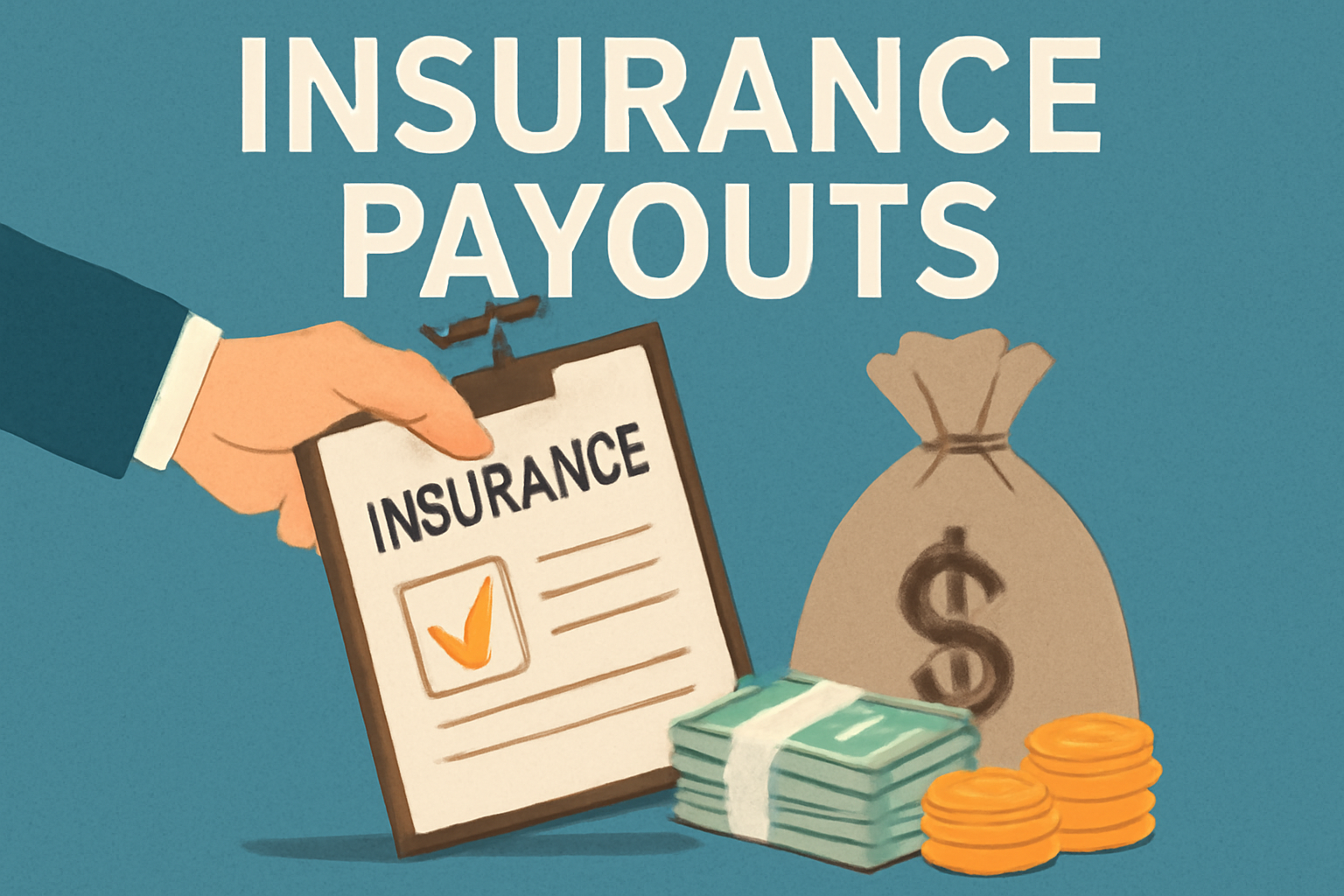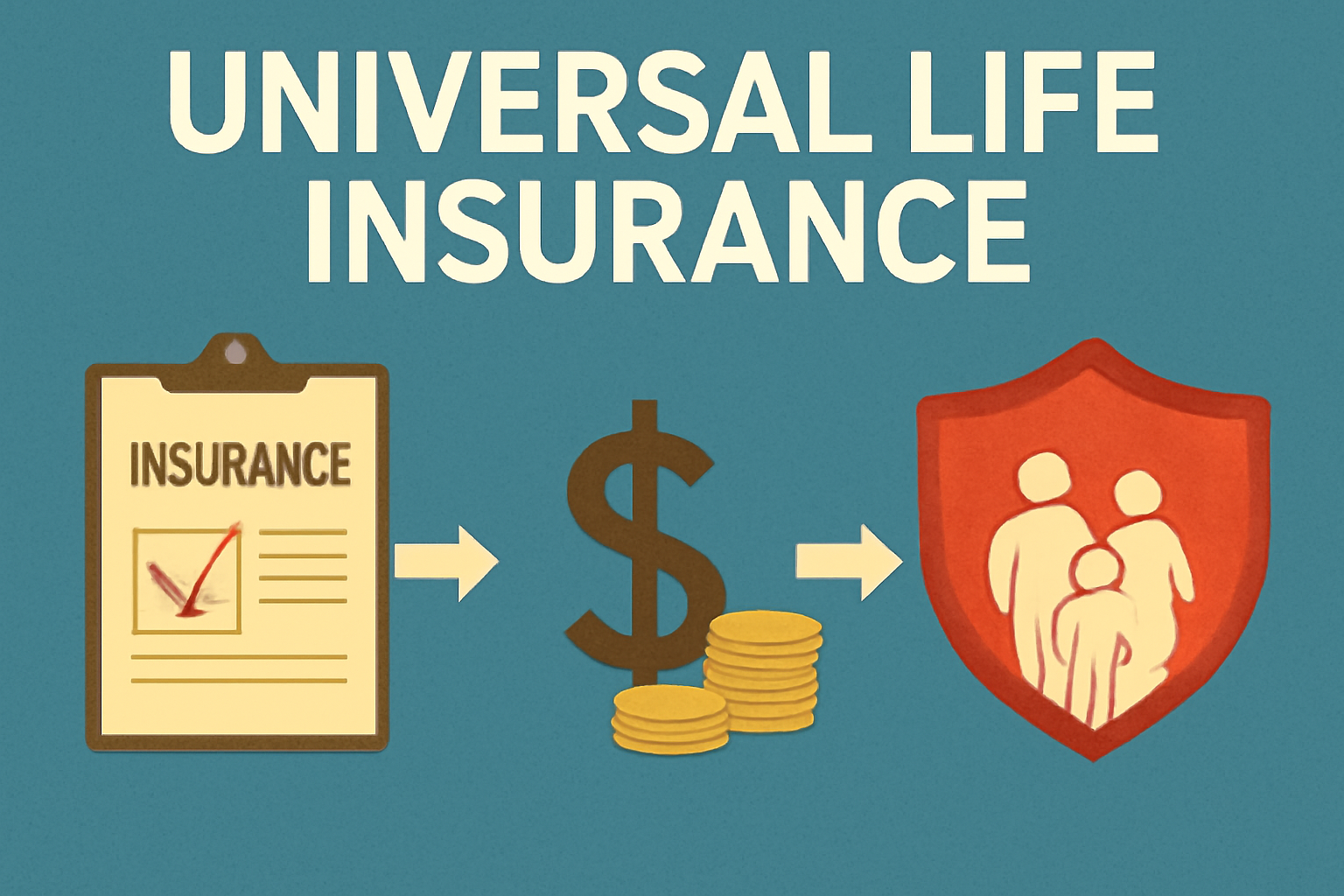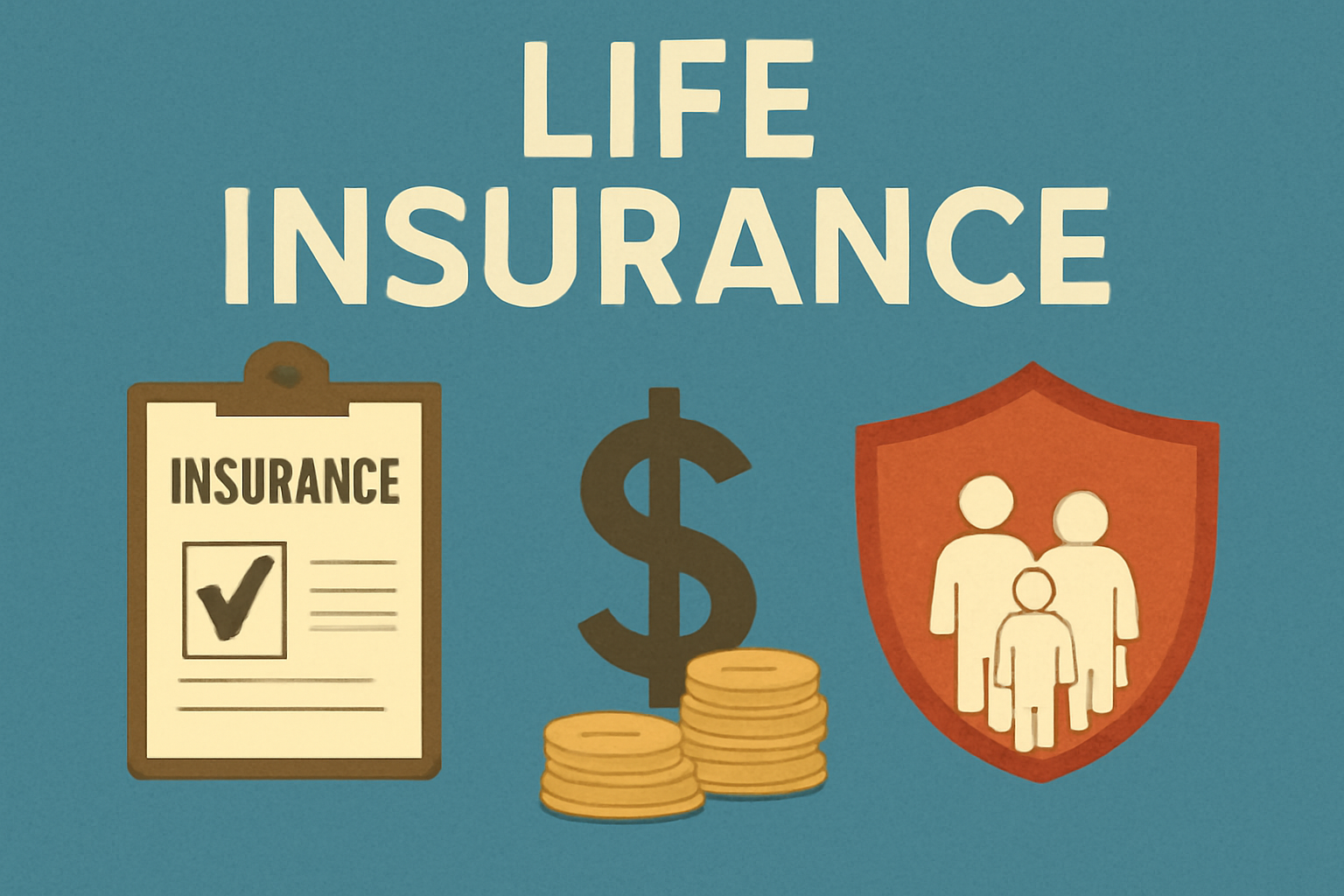There are many questions about what taxes are payable on life insurance benefits. However, one question we are most frequently asked is whether life insurance payouts are taxable. This topic can be intimidating for many people. Therefore, we have put together a brief guide explaining how life insurance works and what tax obligations life insurance may have.
We will cover various areas of life insurance value, as well as various types of taxes in the United States to which life insurance policies may be subject.
Is my life insurance death benefit taxable?
The answer to this question is, in most cases, no. Most life insurance death benefits are exempt from income tax. Furthermore, most life insurance death benefits are significantly higher than other taxable thresholds. However, in the case of an exceptionally large death benefit, the deceased’s estate may be subject to estate tax.
Furthermore, there are certain characteristics of the death benefit that may give rise to a tax liability. These features make the original death benefit non-taxable, but they themselves result in a tax liability.
Example 1 – Interest on Proceeds
Jane is the beneficiary of her husband Jeff’s life insurance policy with a face value of $2 million. Jeff dies, and Jane receives a $2 million death benefit and decides to leave the entire $2 million in the insurance company’s “retained earnings” account.
Jane is not required to pay income tax on the $2 million death benefit, but will receive $60,000 in interest from the retained earnings account over the next 12 months. The insurance company issues Jane a Form 1099 reporting $60,000 in interest income, which she must file with her federal income tax return. The $60,000 interest payment increases Jane’s gross income for the year by $60,000, which is fully subject to federal income tax.
Sometimes, interest on a death benefit is due to legally mandated interest payments that insurance companies must pay to beneficiaries. This most commonly occurs when an insurer takes so long to process a death claim that an interest payment is due—usually more than 30 days.
Example 2 – Interest Owed for Payment Settlement Time
Joe is the beneficiary of his father, Harold’s, $250,000 life insurance policy. Harold dies, and Joe files the claim with the life insurer. The policy was recently issued, and the insurer is reviewing the claim to ensure no foul play has occurred.
Three months later, the insurer completed its investigation and found no reason to void the contract. Joe received the $250,000 death benefit plus an additional $2,500 in interest to which he was entitled, which had accumulated while the death benefit was withheld.
Joe will not have any income tax liability on the $250,000 death benefit, but he will receive a 1099 form for the $2,500 interest payment, which he must file with his tax return, and he will have an income tax liability on the $2,500 interest payment.
There are also cases where compounding interest on a death benefit may be part of an available feature of the life insurance contract. The most common circumstance is a payout option that is not a one-time lump sum payment.
Example 3 – Interest Income from a Settlement Option
Phyllis is the beneficiary of a $1 million life insurance policy on her late husband, John. Instead of receiving the entire million dollars immediately, Phyllis chooses a settlement option that pays her $5,000 monthly for the next 20 years.
The $1 million death benefit does not result in any income tax liability for Phyllis. The interest the insurance company pays on the settlement option results in an income tax liability. At the end of each year, Phyllis receives a Form 1099 from the insurance company listing the interest paid by the insurer to Phyllis under the settlement option. Phyllis must file this Form 1099 with her tax return to claim the interest income.
Estate and Gift Taxes on a Life Insurance Death Benefit
Life insurance proceeds may be subject to estate and/or gift taxes. For U.S. federal estate and gift tax purposes, life insurance policies are included in the calculation of the deceased’s gross estate. The same generally applies in states with estate taxes.
Example 4 – Life Insurance Owned by the Decedent
Gloria recently passed away. Her husband predeceased her. At the time of her death, Gloria owned a $3 million life insurance policy. Her estate includes all of her assets plus the $3 million death benefit paid to her designated beneficiaries.
An exception to this rule regarding life insurance policies and large estates exists for life insurance policies in which the deceased neither owned nor had a controlling interest, but was the insured. In such cases, the death benefit is not included in the deceased’s estate. This circumstance is at the heart of many estate plans that use life insurance as a means of paying estate taxes.
Example 5 – Irrevocable Life Insurance Trust
Brent and Cindy own a successful trucking business and have accumulated considerable wealth as a result. To pay the estate taxes expected to be due upon their deaths, they establish irrevocable trusts and gift money to them, which the trustee uses to purchase life insurance policies for Brent and Cindy.
Because Brent and Cindy neither own nor control the trust or its assets (i.e., the life insurance), and the trust sends notices to the trust’s beneficiaries informing them of their right to withdraw funds from the trust, any death benefits paid from the life insurance policies owned by the trusts are not included in Brent’s or Cindy’s taxable estate.
However, to avoid gift tax consequences for beneficiaries, an important rule must be observed: A life insurance policy cannot have different insureds, owners, and beneficiaries. If this is the case, the life insurance benefit death is subject to the beneficiary’s gift tax liability. This situation is commonly referred to as the Goodman Triangle.
Example 6 – Goodman Triangle
Kim owns a life insurance policy for her brother, Jim, and names Jim’s adult daughter, Meagan, as the beneficiary. Jim dies, and the death benefit paid to Meagan is now subject to gift tax liability. This is because Kim was the owner, Jim was the insured, and Meagan was the beneficiary.
Income Taxes and Cash Values of Life Insurance Policies
Some, but not all, life insurance policies have a cash surrender value that builds up over time through the payment of insurance premiums.
These cash values can be withdrawn from the policy or pledged as collateral for a loan from the insurance company. Under certain circumstances, withdrawing these funds from the policy may result in an income tax liability for the policyholder, but under others, it may not.
First-In, First-Out Withdrawals
Life insurance policies are paid out on a first-in, first-out (FIFO) basis. This means the policyholder can first withdraw the proceeds they paid into the policy and then distribute the proceeds once they have paid all premiums.
Example 7 – FIFO Withdrawal
Mia has a life insurance policy with a cash surrender value of $50,000. Mia’s total premiums paid so far total $15,000. Mia plans to withdraw $25,000 from the policy.
Mia’s tax liability on the payout is $10,000. This is because Mia first withdraws her $15,000 policy contribution—the premiums she paid. Then, Mia withdraws the additional $10,000 from the policy’s earnings.
At the end of the calendar year, the insurance company will send Mia a Form 1099 showing that her taxable payout is $10,000.
From the example above, it’s clear that Mia doesn’t need to send any specific instructions to the insurance company. The insurer will automatically determine what portion of her payout request is a refund of her policy premiums and what portion is a gain from the policy’s earnings.
Income Taxes and Loans
Distributions from a life insurance policy in the form of a loan are not subject to income tax. An exception to this rule occurs when the life insurance policy no longer qualifies as a whole life insurance policy and is reclassified as a modified whole life insurance contract.
Example 8 – Distribution by Policy Loan
Neil owns a life insurance policy with a cash surrender value of $150,000. Neil decides to borrow $30,000 against his policy.
At the end of the calendar year, the insurer sends Neil a Form 1099 showing a payout from his policy, but stating that the payout is not taxable income to Neil.
Income Tax Consequences of Surrendering a Life Insurance Policy
When a policyholder surrenders a cash-value life insurance policy, they will receive information about the amount the insurer owes them and any potential tax consequences that might result from that surrendered amount.
The policyholder is not subject to tax on the value of the policy’s contributions. The policyholder is subject to tax on the value of the policy’s income.
Example 9 – Complete Surrender of the Policy
Nathan recently surrendered a life insurance policy with a cash surrender value of $250,000. During the policy term, he paid $100,000 in premiums. After the end of the calendar year, the insurance company sends him a Form 1099 showing that $150,000 of the payout received is taxable income.
Nathan must file this Form 1099 and pay taxes on the $150,000 gain he earned on the policy. And remember: His policy no longer exists because he has completely waived the policy’s benefits.
Inheritance and Gift Taxes on the Cash Value of Life Insurance Policies
When a life insurance policy builds cash value, the federal government treats that value like any other asset for gift tax purposes. If a policyholder transfers ownership of their policy to another person, the policy’s cash value is considered a gift equal to the policy’s net surrender value. Of course, the annual gift tax exemption applies.
Example 10 – Gift of Life Insurance
Paul owns a life insurance policy with a net surrender value of $45,000. He transfers the policy to his son, Lance. By transferring the policy, Paul gives Lance the surrender value.
The $45,000 gift is subject to a $30,000 gift tax liability because Paul can deduct the $15,000 annual exemption from the gross transfer amount.
Paul must submit the gift information with his current calendar-year tax return using IRS Form 709.
When Gifts Can Minimize Taxes
As discussed in the “Estate Gift Tax and Death Benefits” section, life insurance proceeds from a life insurance policy are included in the calculation of the gross estate. If someone relinquishes ownership of a life insurance policy, the death benefit can be excluded from the gross estate calculation. A three-year look-back period applies; otherwise, the IRS will reject the gift.
Example 11 – Gift of Life Insurance to Minimize Estate
MaryJane recently purchased a $3 million life insurance policy. Its net surrender value is currently $50,000. This puts her current net worth approximately $1 million below the estate tax exemption limit. She does not want to include the life insurance proceeds in her gross estate because they would otherwise be subject to estate tax.
MaryJane decides to gift the policy to her son, Tyler, to remove the death benefit from her gross estate. Assuming MaryJane lives for the next three years, she has made a gift of $35,000 to Tyler, which is subject to gift tax. However, she can plan to use remaining credits from the lifetime tax exemption toward the gift.
Taxes and Employer-Provided Life Insurance
Many employees have varying degrees of life insurance through their employer. This form of life insurance is called group life insurance. Current tax law provides all employees with an income tax exemption for group life insurance policies up to $50,000 of coverage.
Example 12 – Group Life Insurance Coverage Under $50,000
Juanita works as a secretary for a local shipping company and is covered by a group life insurance policy that pays out $25,000 upon her death, provided she continues to work for the company. Juanita pays no premiums for this policy out of pocket, and her beneficiaries would not have to pay income tax on the death benefit upon her death.
For coverage amounts above $50,000, the insured individuals receive notional income to cover the costs of providing the death benefit above $50,000.
Example 13 – Group Life Insurance Coverage Over $50,000
Shanda is an engineer covered by a group life insurance policy. If she dies during the policy term, she pays $400,000 to a named beneficiary. Shanda receives a W-2 form annually from her employer reporting the $350,000 of notional income (over the $50,000 limit) from her life insurance policy.
Shanda will report the notional income as part of her gross income for the year and pay income tax on it.
In the case of group life insurance, if the insured person under the plan does not recognize the notional income and does not pay tax on it, the amount above $50,000 would be subject to income tax for the beneficiary(ies), which is not ideal.
If someone purchases additional coverage (with taxed money) through a group life insurance policy, the tax treatment of the death benefit is the same as for an individually purchased and held life insurance policy. This means the death benefit is not subject to income tax for the beneficiary.
Taxes and Company-Owned Life Insurance
Many companies use life insurance as a funding mechanism for various benefits they offer select employees.
Example 14 – Executive Retirement Plan
Judy is a key executive in her company, and the board wants to ensure she stays with the company until her retirement. The board establishes a retirement plan that pays Judy $50,000 per year from age 65 until her death. However, Judy will only receive this benefit if she stays with the company until age 65. This is an example of “golden handcuffs.”
To ensure this plan has sufficient funds to make future payments to Judy, the company purchases a cash-value life insurance policy with Judy as the insured.
The premiums paid by the company create a tax liability for Judy. However, the company could pay her additional compensation to cover the additional tax liability. When Judy retires, she won’t have to pay taxes on the $50,000 the company paid her.
Judy’s employer plans to use the life insurance death benefit to cover its costs of providing this benefit after Judy’s death. The death benefit is tax-free to the company.
In addition, companies may choose to purchase life insurance for key employees whose continued employment is critical to the company’s continued operations.
Example 15 – Key Employee
Dan, his company’s sales manager, plays a critical role in acquiring new customers. The company recognizes that if he dies, it will take time to find his successor and will likely experience a loss of revenue due to the decline in sales.
The company chooses to purchase life insurance with Dan as the insured. In the event of his death, the company will have additional cash on hand to avoid business interruption while it searches for a replacement.
Business partners often also purchase mutual life insurance policies to liquidate their ownership interests in a business in the event of one partner’s death.
Example 16 – Business Partners
Ben and Larry own several successful car dealerships and run a management company that oversees their operations. The two realize that neither has the cash to buy out the other’s shares. And if they decide to use the company’s cash for this purpose, it would shrink significantly, potentially weakening the business.
Ben and Larry decide to purchase life insurance on each other as part of a buy/sell agreement to ensure they have the funds to buy each other’s shares in the business in the event of one of them’s death. The proceeds from the life insurance are tax-free, allowing them to use the entire proceeds to purchase each other’s shares.
Generally, all forms of life insurance ownership by a business are not subject to income tax.
But…
This statement only applies if the company paid the premiums after taxes. Business owners often like to deduct life insurance premiums as business expenses, but this is not ideal. If premiums are paid before taxes, this has undesirable tax consequences.
Example 17 – Tax Liability for the Death Benefit of a Company-Owned Life Insurance Policy
Ray is the founder and owner of a hedge fund that holds a $5 million policy on Ray. This money buys management time to liquidate the fund in an orderly manner after Ray’s departure.
The company deducted the premiums paid for the life insurance as a business expense. If Ray were to die during the term of the policy, the company would have to pay taxes on the life insurance proceeds.
Important Tax Disclaimer
While we have made every effort to ensure the accuracy of the above information, please note that this information is intended as general information on a complex subject. The above information is not a substitute for personal tax advice. You should always consult a licensed tax professional with specific questions regarding your individual life insurance tax situation.





